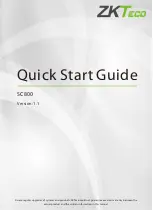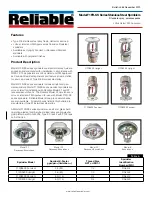
Section 5. Programming the Datalogger
5-13
Output Mode:
0
No output format string
1
Convert location to ASCII floating point. Add character/delimiter between
values if enabled. The last value will not have a delimiter after it.
2
Convert location to ASCII hex pair. Add character/delimiter between values if
enabled. The last value will not have a delimiter after it.
3
Convert location to 8-bit binary. Add character/delimiter between values if
enabled. The last value will not have a delimiter after it.
4
Convert location to 16-bit binary. Add character/delimiter between values if
enabled. The last value will not have a delimiter after it.
8
Transmit a user-defined string 0-255 or fixed string 256-511.
9
String type formatter; this is used where input; location data is to be
transmitted in a complex format. See Output Formats in Section 3.
String Number or Delimiter Character:
If output mode 9 is chosen this is the string number 0..255. If the string is not
allocated then the formatter will not operate. If mode 8 is chosen, then this is the
user defined string 0-255 or fixed string 256-511. If output modes 1 to 4 are
chosen, then this specifies the delimiter character as an ASCII code 0..255. 999
means character not enabled.
Second Command Option (Parameter 6)
This is used for filter set-up if data is expected back after output.
Input mode
| String number or character/delimiter code
| | | |
x x x x
Input Mode:
0
No filter
1
Convert any ASCII numbers to Campbell Scientific floating point up to the
termination character if set
2
Convert any ASCII hex pair to Campbell Scientific floating point up to the
termination character if set
3
Convert 8-bit binary number to Campbell Scientific floating point up to the
termination character if set
4
Convert 16-bit binary number to Campbell Scientific floating point up to the
termination character if set.
8
Transmit a user-defined string 0-255 or fixed string 256-511
9
String filter type. See Filter Strings in section 3.
String Number or Character Code
If input mode 9 is chosen, this is the user-defined filter string number 0..255 or
fixed filter string 256..511 used for the filter; if the string is not allocated the filter
will not operate. If input mode 8 is chosen, this number is the defined string 0-255
or fixed string 256-511. If input modes 1 to 4 are chosen, this is the termination
character as an ASCII code 0..255; 999 means character not enabled.
Min. delay for floating point data = floats*3*(characters*0.26*ports).
Min. delay for strings = characters*0.26*ports.
NOTE
















































